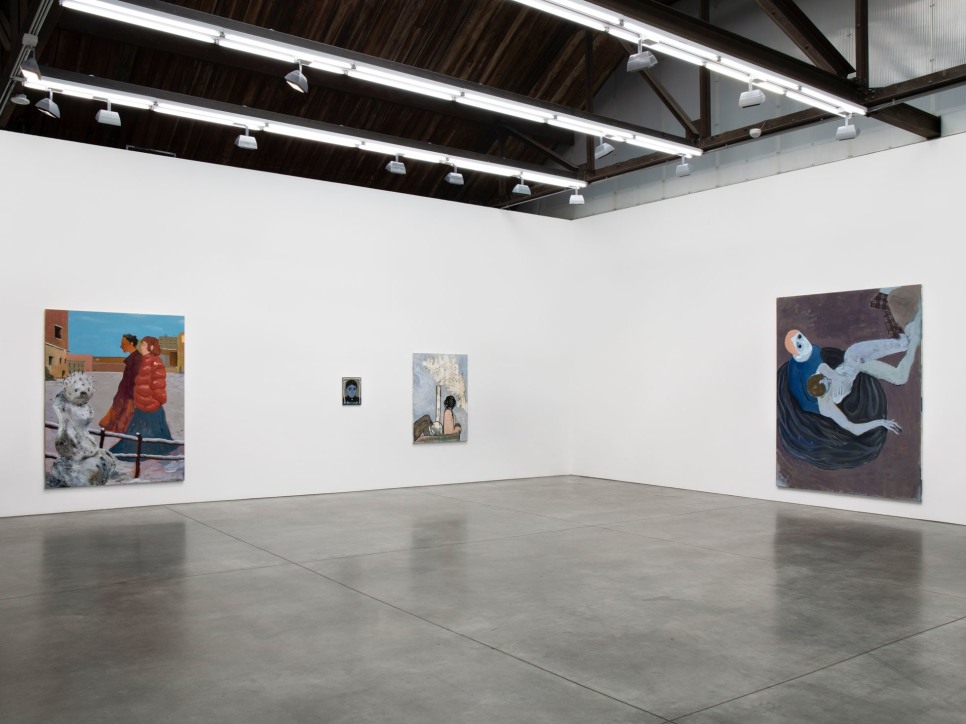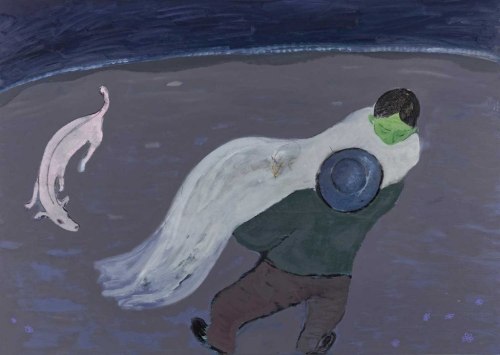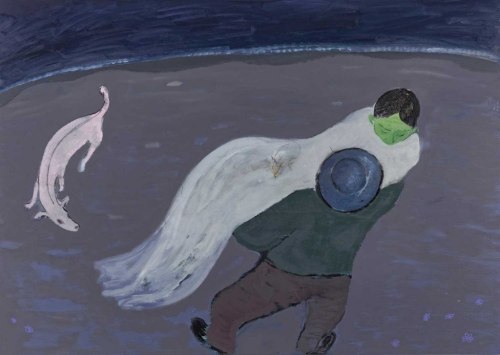

Sanya Kantarovsky, Beach, 2019. Oil and watercolor on canvas
Scenes of misery and melancholy, deadpan grotesqueries, and a small Ensorian carnival — and I keep coming back to the fashion. The puffa jacket on the woman walking by a miserable filthy snowman (Baba, all works 2019). A bright orange shirt at the center of a dark canvas and the way it bleeds from the body of the man who wears it, veiling the ghostly figure he grips with violent, skeletal fingers (On Them). A voluminous black skirt splayed into a puddle, its wearer holding in her arms a crooked, corpselike figure, his own garments piled in the corner (Fracture, 2019). A housedress patterned with flowers and hypodermic needles on a green-skinned woman, strung like a puppet with IV tubes, while her companion — naked again — drapes himself over her shoulders (Needles).
Just as Sanya Kantarovsky’s paintings blend a variety of techniques and styles — from primitive mark-making to precise facture — evoking a range of references, the clothing here is often highly specific yet resists attaching obvious meaning. Something similar plays out as we attempt to follow the sightlines of the figures through hooded or downcast eyes. Elsewhere characters gaze skyward, and we observe them from a cinematic overhead. The act of looking is emphasized, but the object is often inscrutable or unseen, with the effect something like a diffuse visuality. The key exception: Life of the Party, in which a cluster of people watch a headless toddler play the accordion, an allegory for the ethics of looking.
View full article at flashart.com

